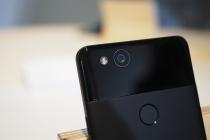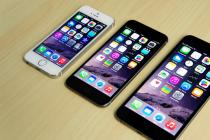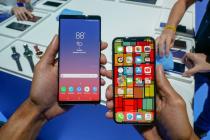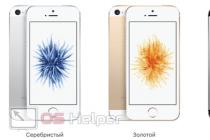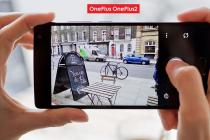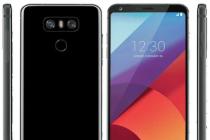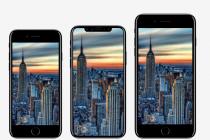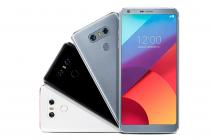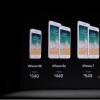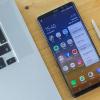To date, there are a huge variety of different phone models, and when the question arises of how to choose a phone, many are simply lost.
Yes, online stores have the ability to choose a gadget by parameters, there are even platforms that take data from several stores and compare features and prices.
But due to such an abundance of models, an ordinary person simply cannot understand which mobile phone is better and experiences real pain of choice.
To reduce them, below we will look at the criteria by which phones are usually chosen. After that, everyone will be able to understand what he needs and make the right choice.
Criterion #1. Budget
Like it or not, everything always depends on the amount of money that we can spend on buying a mobile phone.
Tip #1: Even before buying a new gadget, you should determine how much money you are willing to spend. After that, it will become clear what to expect.
In general, all phones can be divided into the following categories:
And if you need a phone just for this, then choose from models that cost up to 1000 rubles.
And the only characteristic that should take place when choosing a dialer is the quality of the connection.
This refers to how clearly the voice of the interlocutor is transmitted. And here phones from Fly stand out.
An example of a good dialer is Fly DS105C, which can be bought for 800 rubles. If you characterize it in two words, it will be the words "affordable" and "simple".
Indeed, it will be very difficult to find an easier-to-use mobile device.
The battery in it is 900 mAh, which is enough for several days of work without charging (276 hours in standby mode).
Its dimensions are only 110x45x14.6 mm - it fits very easily in your hand. There is a radio, an audio player and even a player for videos in mp4 and 3gp format.
In general, an ideal choice for those who have very little money in their pockets and who need a phone purely for calls.
But it's still the 21st century, and if you already buy a phone, you can save up and buy something more interesting. Then you need to pay attention to all the criteria below.
Criterion #2. OS (operating system)
The operating system is in every modern phone.

The most popular of them are:
- Symbian. This OS today belongs to Nokia and, accordingly, is used only on the devices of this company. Now it is far from being as popular as it was 4-7 years ago. And the following systems on our list are replacing it.
- Android. Most modern phones run on Android. The OS is constantly updated, improved, while often buggy and does not work the way the user wants.
At least, this is evidenced by reviews on the Internet, left even in 2016. On the other hand, this system is the most in demand, it is used by Samsung, HTC, Motorola and all Chinese phones, which is why they talk about it the most. - Apple iOS. A system designed specifically for Apple phones. There is nothing to discuss here - buy an Apple phone, get iOS.
- blackberry OS. Like iOS, it is designed only for Blackberry phones. This system is the record holder in this list, since it was created back in 1999.
- Windows phone. The developers tried to make an analogue of Windows 10 for computers with the same multi-colored pictograms of various labels in the form of squares, only for smartphones. Very popular in the West.
Yes, there are many more different operating systems, for example, OS Bada, Palm OS, Open webOS, Maemo and others. But it is better to choose from these five.
And the reason for this is that they are simply supported in our area, that is, if a phone on the same Android breaks down, we will fix it, but it will be much more difficult to deal with a phone on OS Bada.
You will need to look for a master who would understand this issue, and this is very difficult.
So, operating systems are defined. Now it remains to understand what OS you want on your cell phone.

The operating system should be selected according to the following criteria:
- The purpose of the smartphone If it is needed by a business person who constantly works with documents and wants to customize the interface for himself, then Windows Phone is suitable for him, and if for games and all sorts of “gadgets”, then definitely Android.
If reliability is a priority, that is, a person does not care about games, but he wants to get a phone with which nothing will happen (for example, viruses will not beat), then this is Blackberry OS. - Budget. If you don't have much money in your pocket, but you want to get a good gadget, then choose Symbian. This OS is aimed at the budget class. But if money is not a problem, then you can spend money on Apple with Apple iOS.
Android phones are a kind of golden mean.
Tip #2: It's best to look awayAndroid, because today most applications are written specifically for this OS. In addition, phones withAndroidare cheaper thaniPhone, but have almost the same functionality. And, in the end, this is the most popular OS in our area.

Criterion number 3. Phone power
How powerful a phone is can be determined by the characteristics of the processor and RAM of the phone.
CPU
This characteristic is related to the power of the mobile phone. Processor power is determined by its frequency. It is measured in Hertz (Hz) It is logical that the more of them, the better.
Today, 1-2 GHz (GigaHertz) is normal for phones.
In addition, the power of the processor depends on the number of cores, each of which has its own certain number of Hz.
Interestingly, even on the most powerful modern smartphones, the number of GHz rarely exceeds 2.5 GHz.
Only Chinese masters stand out, who manage to fit up to 3.5 GHz into a regular phone. An example of such a phone is the ZTE Nubia Z9.

Considering the most expensive models and phones from the budget category, you can notice one interesting feature.
It lies in the fact that the processor power on budget smartphones is often greater than on the most expensive ones.
This is quite logical, because manufacturers simply do not yet know a way to make the processor more powerful.
Therefore, if it is important for you that the phone is powerful, you can not overpay.
An example of a really powerful device is Xiaomi Redmi Note 3 at 2 GHz in the processor. It costs about 230 dollars.
By comparison, the Samsung Galaxy S7 costs around $830 and is 2.3GHz. Xiaomi also has 32 GB of internal memory, GPS, GLONASS and many other useful features.
The disadvantages of the phone are only in a bad camera, a dull display (we'll talk about this later) and a non-removable battery - if it breaks, you can't replace it on your own, and these are additional inconveniences.

But Xiaomi Redmi Note 3 is one of the most powerful phones to date due to the next characteristic - RAM.
RAM
Another characteristic that affects power.
Measured in gigabytes (GB). The number of GB determines how quickly the system can respond to user actions and process various operations.
So, in Xiaomi Redmi Note 3 these gigabytes are as much as 3. In the same Samsung Galaxy S7 there are already 4 of them, but it also costs an order of magnitude more expensive, as mentioned above.
It makes no sense to choose a phone depending on the RAM, because with a powerful processor, no one will ever put enough RAM in the phone, otherwise the device will not work correctly.
The bigger, the better.
Prompt: To understand how powerful a processor is, there is a handy program calledAnTuTu benchmark.
In this program, each phone is given a score based on its performance.
So, in early March 2016, a study was conducted that showed that the most powerful phones have a processor called the Qualcomm Snapdragon 820.
In second place is the Apple A9 (iPhone only), and in third place is the Samsung Exynos 8890.
- Huawei Kirin 950;
- Samsung Exynos 7420
- Qualcomm Snapdragon 810;
- Qualcomm Snapdragon 652;
- Apple A8.
Based on this, we can form the following advice.
Tip #3: For a phone to be powerful, it must have one of the processors listed above.
But the problem is that such processors are not installed on budget smartphones.
Therefore, here is a hint for those who are looking towards state employees: Qualcomm Snapdragon 615, Mediatek MT6795 (aka Helio X10) and Qualcomm Snapdragon 801 also perform well.
An example of a phone with the most powerful Qualcomm Snapdragon 820 processor to date is the OnePlus 3 with 4GB of RAM.
The cost of such a pleasure is 500-600 dollars (so far the model has not yet been published).
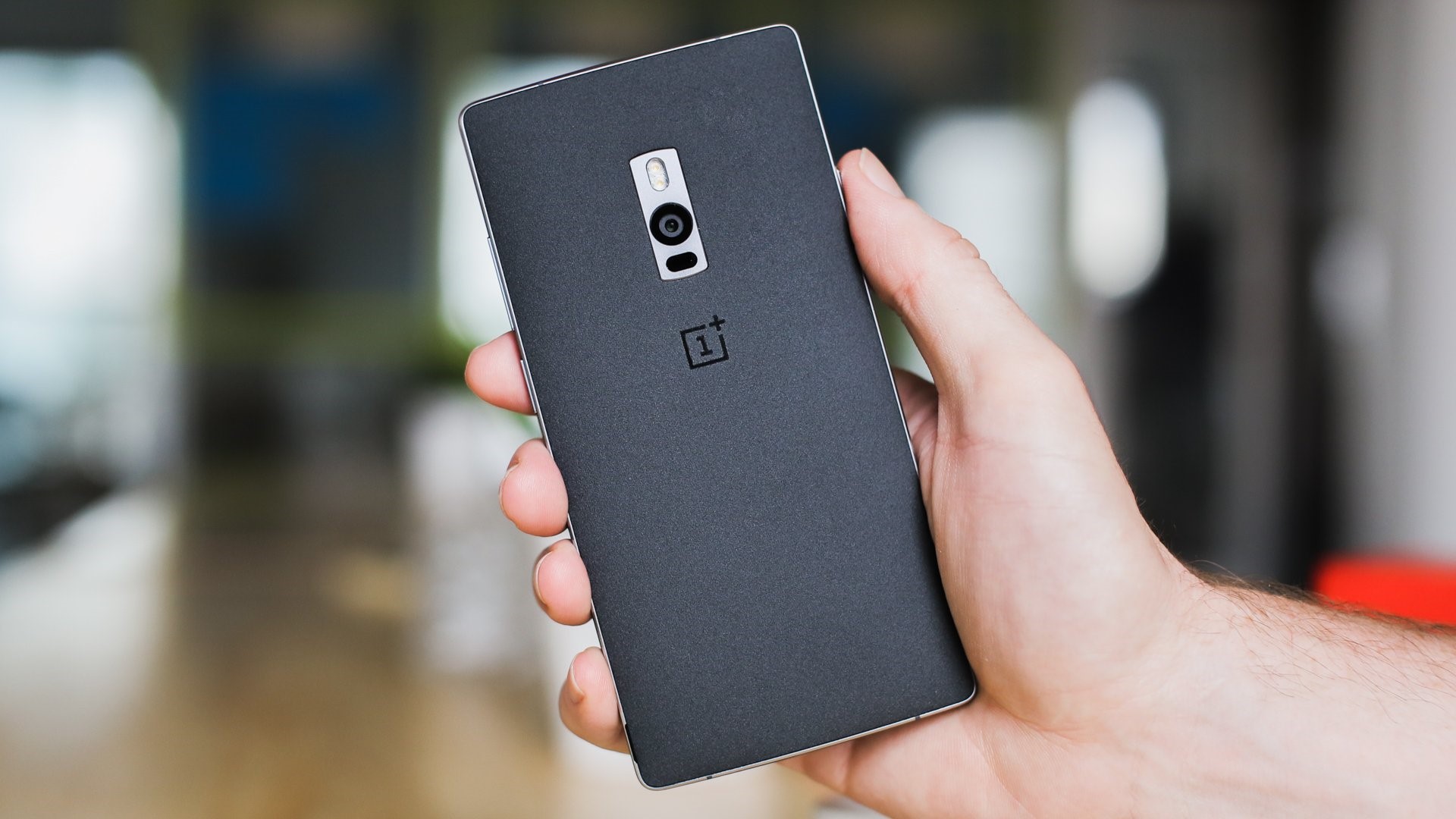
Tip #4: When choosing a phone, look at how much it dials in the programAnTuTu benchmark(this information can be easily found on the Internet). This will make it possible to really see how powerful this or that model is.
Criterion number 4. Working hours
How long the device can work depends directly on the battery. Battery capacity is measured in milliamps. Of course, the more, the better.
Approximately in phones with 2 GB of RAM and a processor frequency of 2 GHz, there should be at least 3000 mAh.
This will give the device the opportunity to work for about two days with a small number of games, a lot of Internet use and work with documents.
If you continuously play some heavy games, for example, GTA or Nova 3, then a device with 3000 mAh will last for about 6 hours.
But even on the most powerful phones, it is rarely more than 4000 mAh. Yes, there are some "unusual" models with 5000 mAh, but they do not last long.
This is very clearly seen in the example of the Bravis Power phone. The phone has 4500 mAh, but there is practically no power and, judging by the reviews on the Internet, the phone works for about 4-5 months.
It costs 115 dollars. The combination of such a price and such a battery capacity raises many questions. And not in vain.

From the above, we can conclude the following: if the phone costs less than $ 150, and the battery capacity on it is more than 3000 mAh.
This is very strange and such a device is unlikely to work for more than a year.
On the other hand, manufacturers often try to save on this parameter and try to take the processor, RAM and other parameters.
Yes, on budget phones, a capacity of approximately 2000 mAh is allowed. After all, there all other elements do not consume so much energy.
Therefore, you can display a certain golden parameter.
Tip #5: The battery capacity should be between 2000 mAh and 4000 mAh.
Criterion number 5. Built-in memory
This setting determines how much data will fit on the phone.
Usually, on budget phones, manufacturers try to put no more than 16 GB, in more expensive phones there can be 32 GB and 64 GB.
But, looking at this parameter, you need to consider only one condition - is it possible to use a memory card.
If you can insert an additional card, then a small amount of internal memory is not a problem.
But it happens that there is no such possibility, and then it is the built-in memory that will play the main role.
True, it is still possible to use cloud storage, but then you will be tied to the Internet - if it is not there, then you will not see your files either.
Therefore, it is ideal that the phone has about 8 GB of internal memory and the ability to insert a memory card.
There is one more thing to say about the memory card. Often, manufacturers make the phone in such a way that it can accept SD cards of 200 GB - 1 TB.
The fact is that if the phone has too many files, about 100 GB, it will slow down and something will have to be deleted.
After all, even the most powerful processor and a large amount of RAM is not enough to process such an amount of information.
Accordingly, there is simply no point in too capacious memory cards.

Tip #6: Choose phones with the ability to insert a memory card up to 100 GB.
Criterion number 6. Camera
It is very easy to check how high-quality and clear a photo is on a particular phone.
To do this, you need to take a picture of something and maximize some part of the picture, that is, use the zoom function.
If the enlarged part of the picture is blurry, it turns out to be fuzzy, then this means that the camera on the phone is not of very high quality.
But sometimes there is no way to pick up the phone and “taste it”.
Then you need to look at two characteristics - the number of megapixels and aperture.
Today, almost all manufacturers of phones and cameras are trying to attract people with the number of megapixels.
This value reflects how many pixels form the image. But not only this characteristic affects the quality of the picture.
The size of the aperture or relative aperture also affects. The meaning of this quantity can be explained with an example.
Imagine that you are in the country, it is raining and you need to collect as much water as possible in some containers.
If you put an ordinary mug with a diameter of 15 cm, then not very many drops will fall into it, and the water will collect slowly.
But if you put a large bowl with a diameter of 50 cm, more drops will fall into it and the container will fill up much faster.
In the same way, the aperture reflects how much light enters the camera lens.
Aperture size is referred to as f/size. In the figure you can see the sizes of different apertures.
It becomes clear that the smaller this number, the larger the aperture, respectively, the more light it can catch and the better the pictures will be.

Megapixels + aperture
It is interesting that now on the Internet they write a lot about the fact that nothing at all depends on the number of megapixels and only the aperture affects the quality of the pictures.
In fact, this is not entirely true, because there have been cases when developers, using this myth, put few megapixels on phones, and made the aperture large, as a result, the pictures were not of very high quality.
Therefore, it is better to choose phones with a minimum “f /” value and with a maximum number of megapixels.
On the other hand, it is very rare to find a phone with a large number of megapixels and a large f / value, manufacturers combine these parameters.
According to these parameters, Samsung cameras perform very well. In general, this company has a lot of its own technologies, one of them concerns cameras.
The favorite in this respect is the Samsung Galaxy S6 with a 16 MP main camera and a 5 MP front camera.
To visualize this, here is a shot of a night landscape taken on an iPhone 6.

And here is a shot of the same area taken on the Samsung Galaxy S6.

Agree that the photo taken on the Samsung Galaxy S6 is brighter and more saturated. After all, it has more resolution, which allows you to see the smallest details in the picture.
Tip #7: When choosing a camera on your phone, be guided by a combination of megapixels and aperture.
At the same time, you should not pay attention to only one of these parameters, because often manufacturers, trying to deceive their customers, write only the number of megapixels or only the aperture (often the first one).
Criterion number 7. Screen
Everyone wants the picture on the phone to be bright and saturated too. But what to look for to choose such a phone? Brightness and saturation depend on four parameters:
- Diagonal.
- Permission.
- Pixel density.
Let's consider each of them in more detail.
Diagonal
This characteristic reflects the distance from one corner of the screen to the opposite corner. The figure below clearly shows this distance.

The screen size should be chosen depending on why you need a phone:
- for calls and basic functions - 3-4 inches;
- for Internet surfing and reading books - 4-5 inches;
- for games and watching movies - 5-6 inches.
Everything is very simple here.
Permission
Screen resolution is directly related to the diagonal in the following ratio:
- for a diagonal of 3-4 inches, the resolution can be 480x800;
- for a diagonal of 4-5 inches, the resolution can be 960x540;
- for everything else, the resolution can be 1280x720 (HD), 1920x1080 (FullHD) and 2560x1440 (QuadHD).
Of course, the higher the resolution, the clearer the picture will be.
Pixel Density
It is written as PPI (pixels per inch) and expresses how many pixels fit into one inch of the screen. It is clear that the higher this characteristic, the clearer the image should be.
Typically, manufacturers try to make the number of pixels per inch match the screen resolution.
So, on screens with a resolution of 1280x720 there can be up to 300 ppi. In principle, it makes no sense to choose a phone depending on this characteristic.
You need to look at the previous two parameters - diagonal and resolution. In addition, the next parameter is very important.
Screen type
To date, the most popular types of screens are the following:
- OLED
- AMOLED and Super AMOLED;
- AFFS.
In our area, you are unlikely to find phones with screens of the last two types, but in the West they are very popular.
It is very interesting that of the first three types, models with Super AMOLED screens perform best.
A phone with HD resolution and Super AMOLED screen will look much better than a model with Full HD resolution and IPS screen.
In particular, the viewing angles will be much better.
This setting means that you can look at the phone almost at right angles and still be able to see what is happening on the screen.
The figure shows a comparison of the two types.

This is especially true for Samsung phones, where a lot of their unique technologies are applied, so Samsung with Super AMOLED is much better than any other phone with Super AMOLED.
However, other screens look quite good, and you should pay attention to this characteristic only if you really care about the saturation and clarity of the screen.
Tip #8: If saturation and brightness are important to you, choose a phone withSuper AMOLEDscreen.
Here is another photo that confirms that it is best to choose Super AMOLED screens.

The leftmost phone here is the Sony Xperia Z Ultra with a TRILUMINOS screen, the second is the Samsung Galaxy Note 3 with Super AMOLED, then comes the Sony Xperia Z1 with the same TRILUMINOS and the last is the Lg G2 with IPS.
It is clear that Samsung looks better than the rest.

